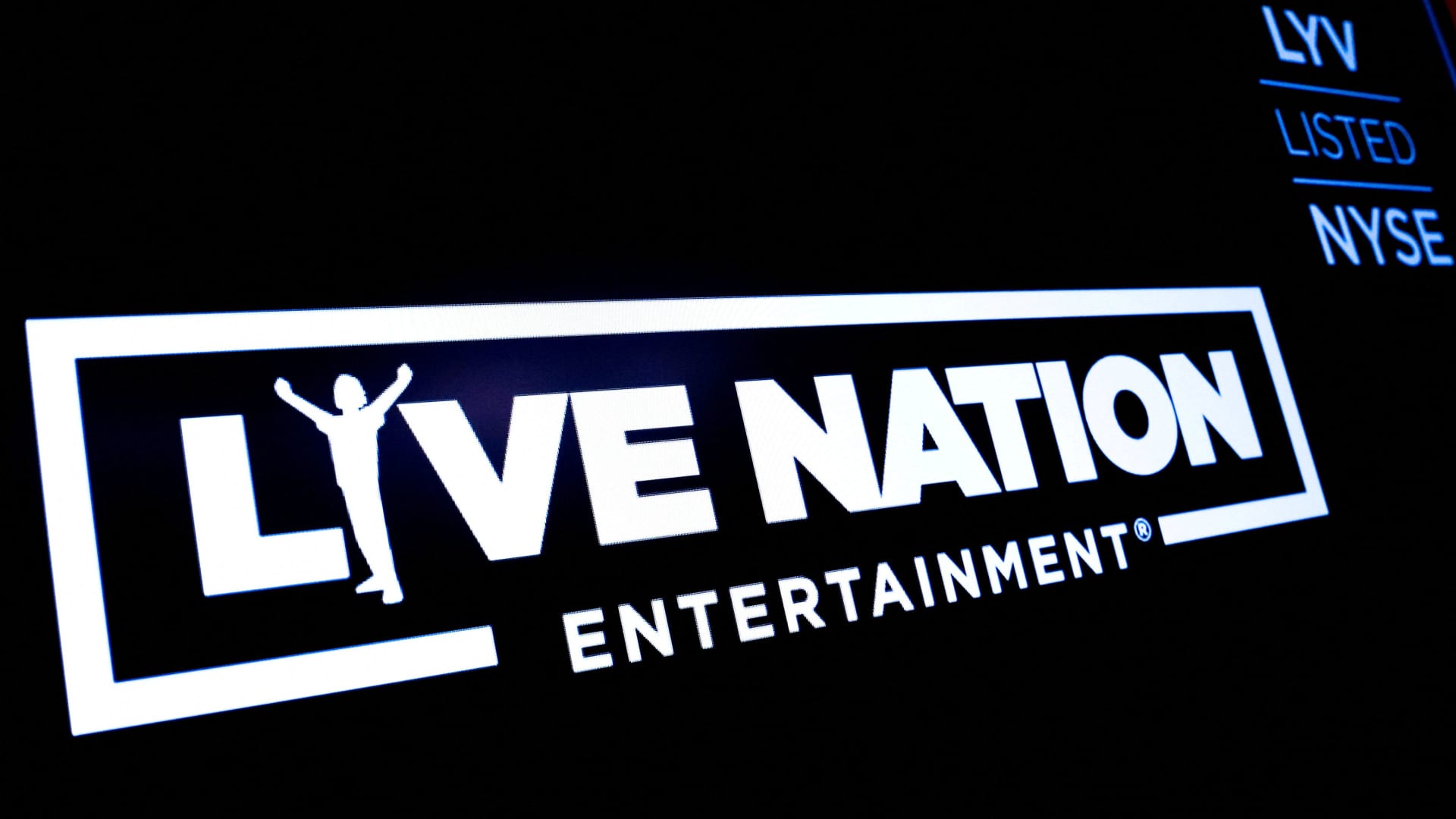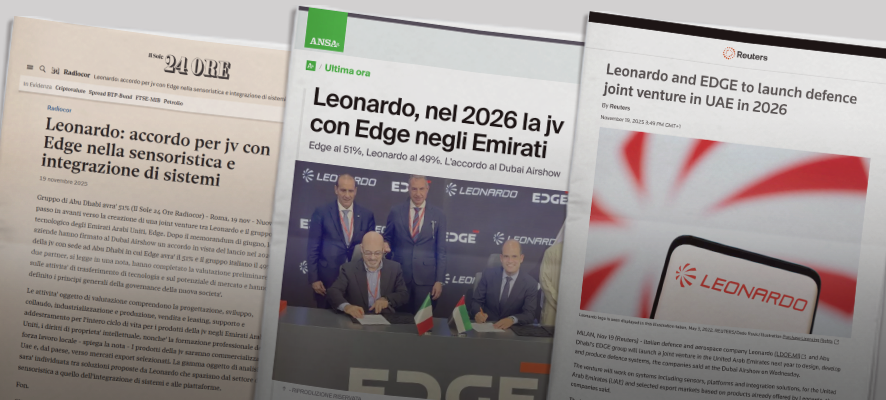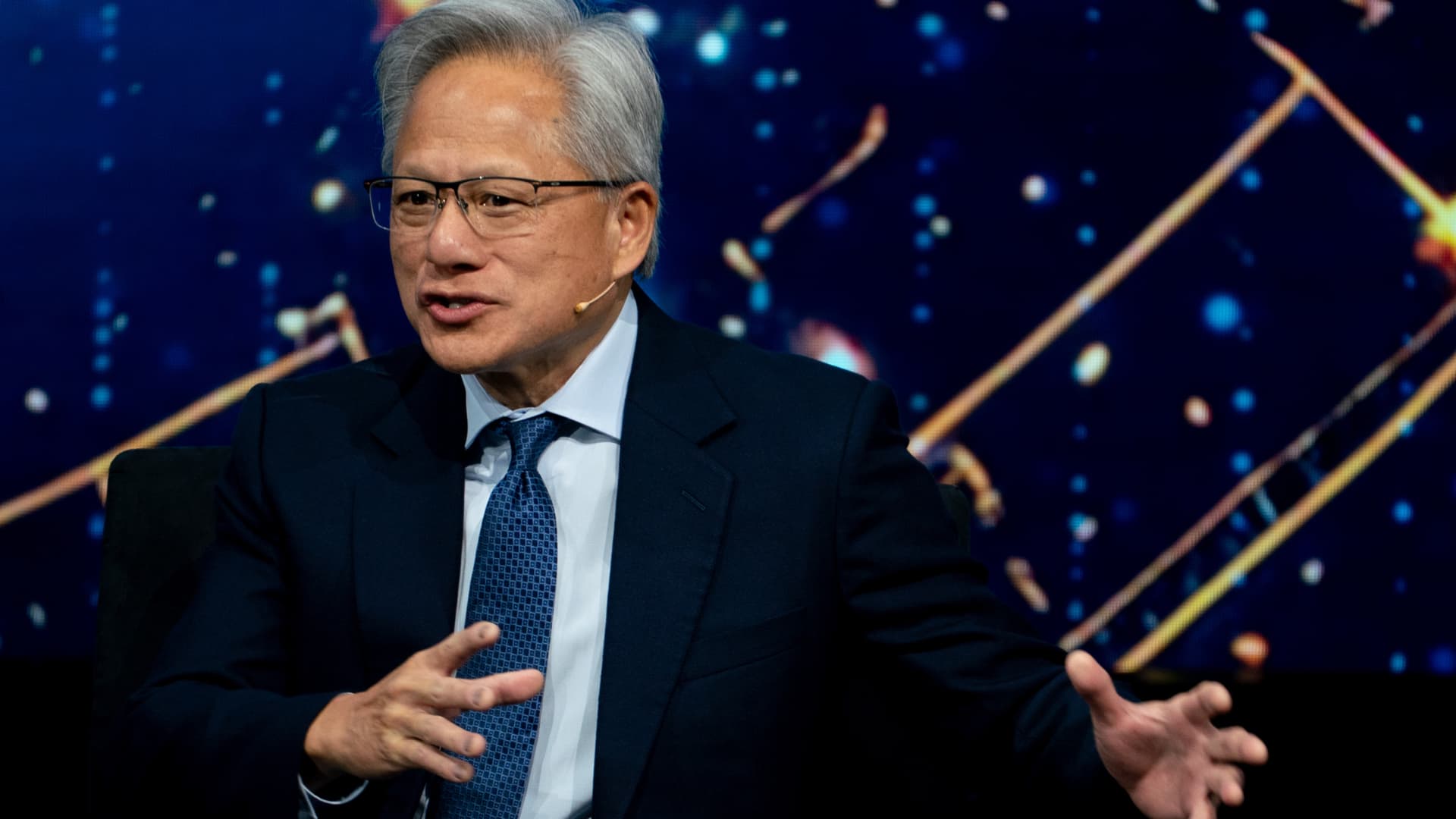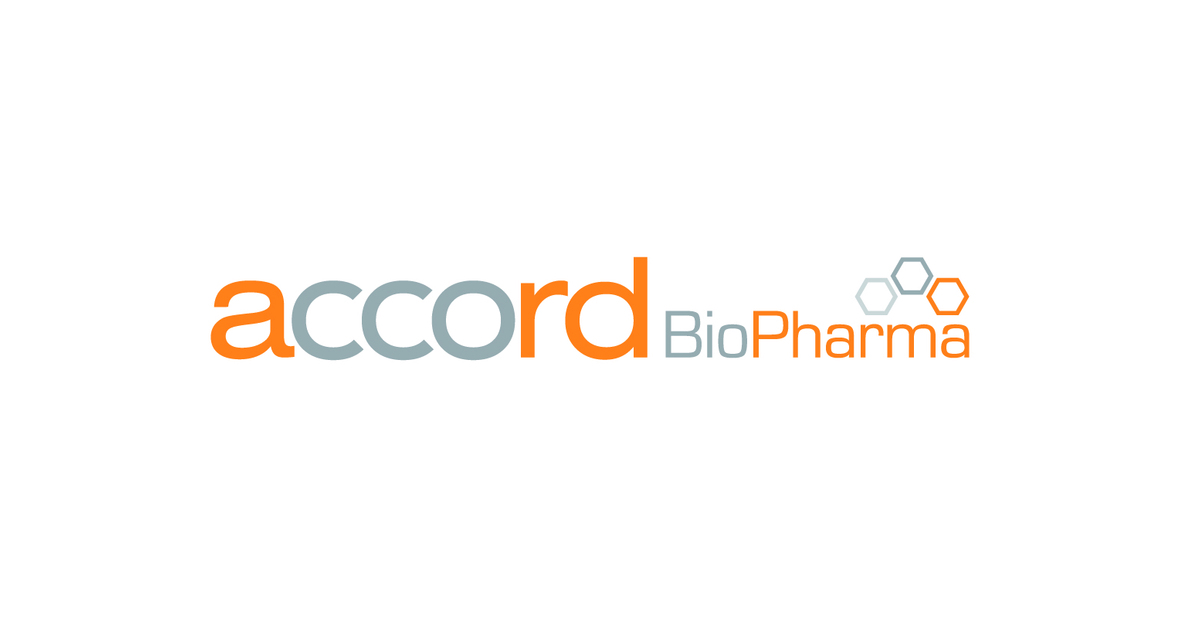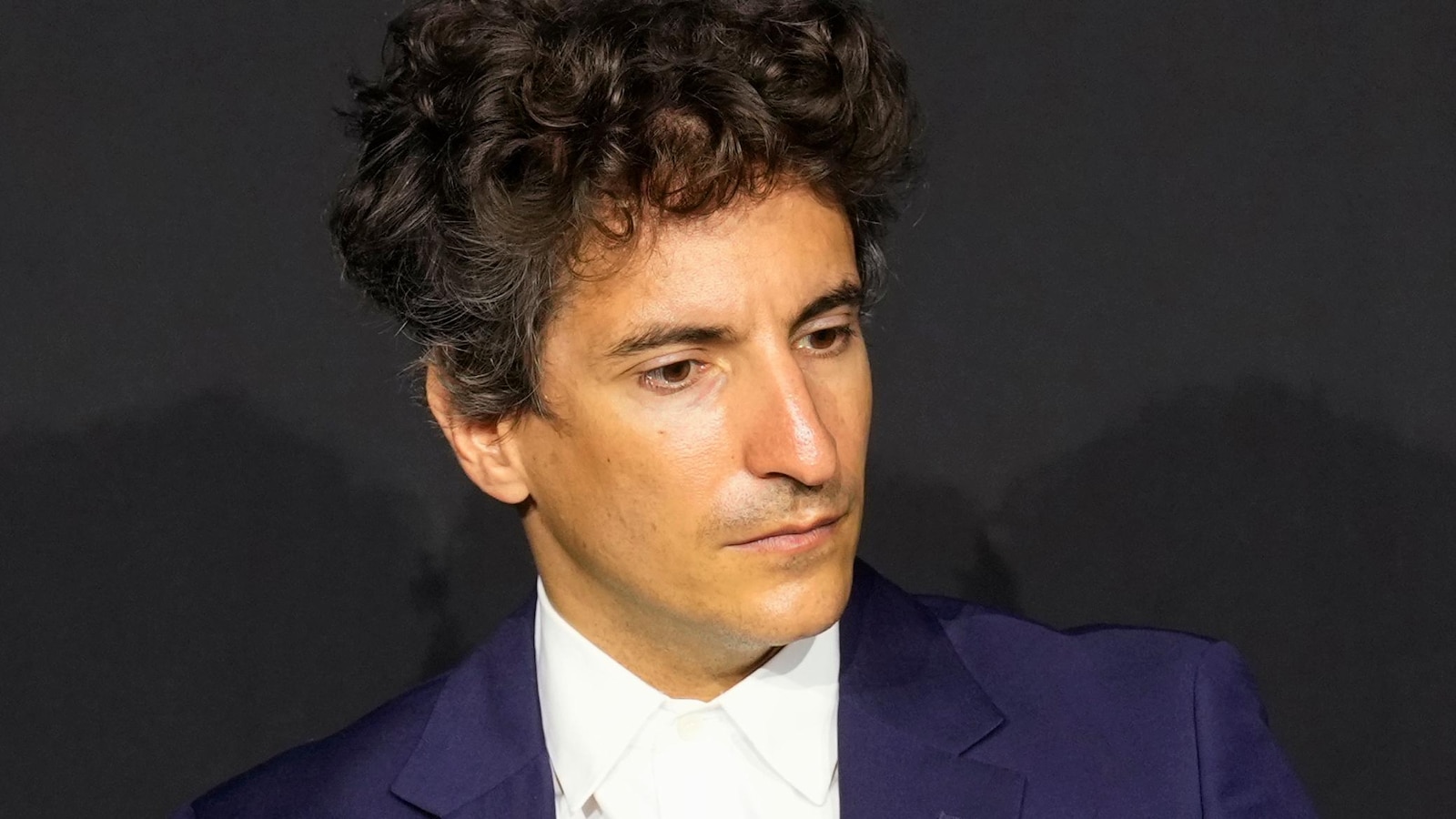Products will treat osteoporosis and skeletal-related events from certain types of bone cancer, expanding the company’s biosimilar portfolio
RALEIGH, N.C., Nov. 20, 2025 /PRNewswire/ — Accord BioPharma, Inc., the specialty division of Intas Pharmaceuticals, Ltd., focused on development of oncology, immunology, and critical care therapies, announced today the U.S. Food and Drug Administration (FDA) approval of OSVYRTI® (denosumab-desu), a biosimilar to Prolia® (denosumab), and JUBEREQ® (denosumab-desu), a biosimilar to Xgeva® (denosumab).1-2 The dual approvals mark Accord BioPharma’s fourth and fifth biosimilars, demonstrating the company’s continued growth in the U.S. market.
Approved for all of the same indications of its reference product Prolia, developed by Amgen, OSVYRTI is indicated for treatment of postmenopausal women with osteoporosis at high risk for fracture, to increase bone mass in men with osteoporosis at high risk for fracture, treatment of glucocorticoid-induced osteoporosis in men and women at high risk for fracture, to increase bone mass in men at high risk for fracture receiving androgen deprivation therapy for nonmetastatic prostate cancer, and to increase bone mass in women at high risk for fracture receiving adjuvant aromatase inhibitor therapy for breast cancer. OSVYRTI carries a Boxed Warning for severe hypocalcemia in patients with advanced kidney disease. Like Prolia, OSVYRTI is approved with a REMS program.1
JUBEREQ was also approved for all indications of its reference product (Xgeva, developed by Amgen). JUBEREQ is indicated for the prevention of skeletal-related events in patients with multiple myeloma and in patients with bone metastases from solid tumors, treatment of adults and skeletally mature adolescents with giant cell tumor of bone that is unresectable or where surgical resection is likely to result in severe morbidity, and treatment of hypercalcemia of malignancy refractory to bisphosphonate therapy.2
“Both OSVYRTI and JUBEREQ have been approved for a wide variety of bone-related indications, including osteoporosis and bone loss from the treatment of certain kinds of cancer,” said Chrys Kokino, President, Accord North America. “These biosimilars have the potential to provide a large number of patients with treatment alternatives that lessen cost as a barrier to accessing proven therapies. At Accord, we are passionate about leading biosimilar adoption, and OSVYRTI and JUBEREQ represent significant steps in our mission to make biosimilars more accessible.”
In 2024, global Prolia sales increased 8% year over year to more than $4.374 billion, while Xgeva revenues climbed 5% to $2.225 billion, putting both products among Amgen’s top five highest-selling drugs.3
The approval of OSVYRTI and JUBEREQ is based on results from two trials: a Phase I trial and a Phase III trial that met their primary endpoints. The Phase I trial was a randomized, double-blind, three-arm pharmacokinetic (PK) study comparing JUBEREQ to Xgeva in healthy adult males. The study demonstrated that PK parameters were found to be comparable between the two products.4 The Phase III study was a randomized, double-blind, active-controlled, parallel arm, multicenter study comparing PK/PD, efficacy and safety of OSVYRTI to Prolia in postmenopausal women with osteoporosis. The clinical study results demonstrated that OSVYRTI and its reference product, Prolia, are highly similar, and have no clinically meaningful differences in terms of PK, PD, safety and efficacy.2,4
Accord is currently working to commercialize OSVYRTI and JUBEREQ and bring these brands to the marketplace in 2026. More details will be provided closer to availability.
“OSVYRTI and JUBEREQ are the first biosimilars Accord has developed completely on its own, and we will manufacture these products internally without a third-party partnership,” said Mr. Binish Chudgar, Chairman and Managing Director of Intas Pharmaceuticals. “We believe biosimilars are here to stay, and we are investing in their promise of cost savings for patients and the entire U.S. healthcare system.”
Accord BioPharma’s portfolio has experienced sizable growth within the past year. The company assumed U.S. operations earlier this year for the full UDENYCA® (pegfilgrastim-cbqv) franchise, including the UDENYCA pre-filled syringe, the UDENYCA autoinjector, and UDENYCA ONBODY®. Accord BioPharma is also marketing IMULDOSA® (ustekinumab-srlf), a biosimilar to Stelara® (ustekinumab), HERCESSI™ (trastuzumab-strf), a biosimilar to Herceptin® (trastuzumab), and CAMCEVI® (leuprolide) 42 mg injectable emulsion. Please refer to the Important Safety Information and full Prescribing Information for all products, and to the Boxed Warning for HERCESSI.
Intas Pharmaceuticals, Ltd. has an exclusive agreement with Bio-Thera Solutions to enable Accord BioPharma to bring Bio-Thera’s golimumab candidate BAT2506 – a biosimilar to Simponi® (golimumab) – to the U.S. market.
Contact:
[email protected]
IMPORTANT SAFETY INFORMATION FOR OSVYRTI® (denosumab-desu) injection, for subcutaneous use
OSVYRTI® (denosumab-desu) is biosimilar to PROLIA® (denosumab)
BOXED WARNING AND ADDITIONAL IMPORTANT SAFETY INFORMATION
|
WARNING: SEVERE HYPOCALCEMIA IN PATIENTS WITH ADVANCED KIDNEY DISEASE
|
|
See full prescribing information for complete boxed warning.
|
|
•
|
Patients with advanced chronic kidney disease are at greater risk of severe hypocalcemia following denosumab products administration. Severe hypocalcemia resulting in hospitalization, life-threatening events and fatal cases have been reported.
|
|
•
|
The presence of chronic kidney disease-mineral bone disorder (CKD-MBD) markedly increases the risk of hypocalcemia.
|
|
•
|
Prior to initiating OSVYRTI in patients with advanced chronic kidney disease, evaluate for the presence of CKD-MBD. Treatment with OSVYRTI in these patients should be supervised by a healthcare provider with expertise in the diagnosis and management of CKD-MBD.
|
Contraindications: OSVYRTI is contraindicated in patients with hypocalcemia. Pre-existing hypocalcemia must be corrected prior to initiating OSVYRTI. OSVYRTI is contraindicated in women who are pregnant and may cause fetal harm. In women of reproductive potential, pregnancy testing should be performed prior to initiating treatment. OSVYRTI is contraindicated in patients with hypersensitivity to denosumab products. Reactions have included anaphylaxis, facial swelling and urticaria.
Severe Hypocalcemia and Mineral Metabolism Changes: Pre-existing hypocalcemia must be corrected prior to initiating therapy; severe hypocalcemia and fatal cases have been reported with denosumab products. Adequately supplement all patients with calcium and vitamin D.
In patients without advanced CKD who are predisposed to hypocalcemia and disturbances of mineral metabolism, assess serum calcium and mineral levels (phosphorus and magnesium) 10 to 14 days after OSVYRTI injection. In some postmarketing cases, hypocalcemia persisted for weeks or months and required frequent monitoring and intravenous and/or oral calcium replacement, with or without vitamin D.
Patients with Advanced Chronic Kidney Disease
Patients with advanced chronic kidney disease (eGFR <30 mL/min/1.73 m²), including dialysis-dependent patients, are at high risk for severe hypocalcemia after denosumab products administration, which can lead to hospitalization, life-threatening events, or death. CDK-MBD and concomitant calcimimetic use further increase risk.
Assess for mineral bone disorder before OSVYRTI treatment, monitor serum calcium weekly for the first month, then monthly, and educate patients on hypocalcemia symptoms and the need for adequate calcium and activated vitamin D supplementation.
Same Active Ingredient: Patients receiving OSVYRTI should not receive other denosumab products concomitantly.
Hypersensitivity: Clinically significant hypersensitivity including anaphylaxis has been reported with denosumab products. Symptoms included hypotension, dyspnea, throat tightness, facial and upper airway edema, pruritus and urticaria. If an anaphylactic or other clinically significant allergic reaction occurs, initiate appropriate therapy and discontinue further use of OSVYRTI.
Osteonecrosis of the Jaw (ONJ): ONJ, which can occur spontaneously, is generally associated with tooth extraction and/or local infection with delayed healing and has been reported in patients receiving denosumab products. An oral exam should be performed prior to initiation of OSVYRTI. Concomitant administration of drugs associated with ONJ may increase the risk of developing ONJ. The risk of ONJ may increase with duration of exposure to denosumab products.
For patients requiring invasive dental procedures, clinical judgment should guide the management plan based on individual benefit-risk assessment.
Patients suspected of having or who develop ONJ should receive care by a dentist or an oral surgeon. Extensive dental surgery to treat ONJ may exacerbate the condition. Discontinuation of OSVYRTI should be considered based on individual benefit-risk assessment.
Atypical Subtrochanteric and Diaphyseal Femoral Fractures: Atypical low-energy, or low trauma fractures of the shaft have been reported with denosumab products. These fractures can occur anywhere in the femoral shaft from just below the lesser trochanter to above the supracondylar flare and are transverse or short oblique in orientation without evidence of comminution. Causality has not been established as these fractures also occur in osteoporotic patients who have not been treated with antiresorptive agents.
Atypical femoral fractures most commonly occur with minimal or no trauma to the affected area. They may be bilateral, and many patients report prodromal pain in the affected area, usually presenting as dull, aching thigh pain, weeks to months before a complete fracture occurs. A number of reports note that patients were also receiving treatment with glucocorticoids (e.g. prednisone) at the time of fracture.
During OSVYRTI treatment, advise patients to report new or unusual thigh, hip, or groin pain. Any patient who presents with thigh or groin pain should be evaluated to rule out an incomplete femur fracture. Patients presenting with an atypical femur fracture should also be assessed for symptoms and signs of fracture in the contralateral limb. Interruption of OSVYRTI therapy should be considered, pending a risk/benefit assessment, on an individual basis.
Multiple Vertebral Fractures Following Discontinuation of Treatment: Following discontinuation of denosumab treatment, fracture risk increases, including the risk of multiple vertebral fractures.
New vertebral fractures occurred as early as 7 months (on average 19 months) after the last dose of denosumab. Prior vertebral fracture was a predictor of multiple vertebral fractures after denosumab discontinuation. Evaluate an individual’s benefit/risk before initiating treatment with OSVYRTI. If OSVYRTI treatment is discontinued, patients should be transitioned to an alternative antiresorptive therapy.
Serious Infections: Serious infections leading to hospitalization were reported more frequently in patients taking denosumab. Serious skin infections, and infections of the abdomen, urinary tract and ear were more frequent in patients treated with denosumab.
Endocarditis was also reported more frequently in denosumab-treated patients. Advise patients to seek prompt medical attention if they develop signs or symptoms of severe infection, including cellulitis.
Patients on concomitant immunosuppressant agents or with impaired immune systems may be at increased risk for serious infections. In patients who develop serious infections while on OSVYRTI, prescribers should assess the need for continued therapy.
Dermatologic Adverse Reactions: Epidermal and dermal adverse events such as dermatitis, eczema and rashes occurred at a significantly higher rate in patients taking denosumab. Most of these events were not specific to the injection site. Consider discontinuing OSVYRTI if severe symptoms develop.
Musculoskeletal Pain: Severe and occasionally incapacitating bone, joint, and/or muscle pain has been reported with denosumab products. Consider discontinuing OSVYRTI use if severe symptoms develop.
Suppression of Bone Turnover: Treatment with denosumab resulted in significant suppression of bone remodeling as evidenced by markers of bone turnover and bone histomorphometry. The significance and effect of long-term treatment with denosumab products are unknown. Monitor patients for consequences, including ONJ, atypical fractures, and delayed fracture healing.
Hypercalcemia in Pediatric Patients with Osteogenesis Imperfecta: OSVYRTI is not approved for use in pediatric patients. Hypercalcemia has been reported in pediatric patients with osteogenesis imperfecta treated with denosumab products. Some cases required hospitalization.
Most Common Adverse Reactions:
- Postmenopausal osteoporosis: Greater than 5% and more common than placebo: back pain, pain in extremity, hypercholesterolemia, musculoskeletal pain, and cystitis. Pancreatitis has been reported in clinical trials.
- Male osteoporosis: Greater than 5% and more common than placebo: back pain, arthralgia, and nasopharyngitis.
- Glucocorticoid-induced osteoporosis: Greater than 3% and more common than active-control group were: back pain, hypertension, bronchitis, and headache.
- Bone loss due to hormone ablation for cancer: Greater than or equal to 10% and more common than placebo: arthralgia and back pain. Pain in extremity and musculoskeletal pain have also been reported in clinical trials.
INDICATIONS
OSVYRTI is a RANK ligand (RANKL) inhibitor indicated for treatment:
- of postmenopausal women with osteoporosis at high risk for fracture
- to increase bone mass in men with osteoporosis at high risk for fracture
- of glucocorticoid-induced osteoporosis in men and women at high risk for fracture
- to increase bone mass in men at high risk for fracture receiving androgen deprivation therapy for nonmetastatic prostate cancer
- to increase bone mass in women at high risk for fracture receiving adjuvant aromatase inhibitor therapy for breast cancer
To report SUSPECTED ADVERSE REACTIONS, contact Accord BioPharma Inc at 1-866-941-7875 or FDA at 1-800-FDA-1088 or www.fda.gov/medwatch.
OSVYRTI (denosumab-desu) injection is supplied in a 60 mg/mL single-dose prefilled syringe.
Click here for full Prescribing Information, including Boxed Warning.
IMPORTANT SAFETY INFORMATION FOR JUBEREQ® (denosumab-desu) injection, for subcutaneous use
JUBEREQ® (denosumab-desu) is biosimilar to XGEVA® (denosumab)]
IMPORTANT SAFETY INFORMATION
Contraindications: JUBEREQ is contraindicated in patients with hypocalcemia. Pre-existing hypocalcemia must be corrected prior to initiating therapy. JUBEREQ is contraindicated in patients with known clinically significant hypersensitivity to denosumab products.
Same Active Ingredient: Patients receiving JUBEREQ should not receive other denosumab products concomitantly.
Hypersensitivity: Clinically significant hypersensitivity including anaphylaxis has been reported with denosumab products. Reactions may include hypotension, dyspnea, upper airway edema, lip swelling, rash, pruritus, and urticaria. If an anaphylactic or other clinically significant allergic reaction occurs, initiate appropriate therapy and discontinue JUBEREQ therapy permanently.
Hypocalcemia: Severe symptomatic hypocalcemia and fatal cases have been reported. Correct pre-existing hypocalcemia prior to JUBEREQ treatment, and fatal cases have been reported. Monitor calcium levels throughout therapy, especially in the first weeks, and administer calcium, magnesium, and vitamin D as necessary. Concomitant use of calcimimetics and other drugs that can lower calcium levels may worsen hypocalcemia risk and serum calcium should be closely monitored. Advise patients to contact a healthcare provider for symptoms of hypocalcemia.
Increased risk of hypocalcemia has been observed in patients with increasing renal dysfunction, most commonly with worsening CrCl (<30 mL/min and/or on dialysis), and with inadequate/no calcium supplementation. Monitor calcium levels and calcium and vitamin D intake.
Osteonecrosis of the Jaw (ONJ): ONJ has been reported manifesting as jaw pain, osteomyelitis, osteitis, bone erosion, tooth or periodontal infection, toothache, gingival ulceration, or gingival erosion. Persistent pain or slow healing of the mouth or jaw after dental surgery may also be manifestations of ONJ. In clinical trials the incidence of ONJ was higher with longer duration of exposure.
Predisposing factors for developing ONJ include a history of tooth extraction, poor oral hygiene, and use of a dental appliance. Other risk factors include immunosuppressive therapy, use of angiogenesis inhibitors, systemic corticosteroids, diabetes, and gingival infections.
Perform an oral examination and appropriate preventive dentistry prior to the initiation of JUBEREQ and periodically during therapy. Advise patients regarding oral hygiene practices. Avoid invasive dental procedures during treatment. Consider temporary discontinuation of JUBEREQ if an invasive dental procedure must be performed.
Patients who are suspected of having or who develop ONJ while on JUBEREQ should receive care by a dentist or an oral surgeon. In these patients, extensive dental surgery to treat ONJ may exacerbate the condition.
Atypical Subtrochanteric and Diaphyseal Femoral Fractures: Atypical femoral fractures have been reported with denosumab products. These fractures can occur anywhere in the femoral shaft from just below the lesser trochanter to above the supracondylar flare and are transverse or short oblique in orientation without evidence of comminution.
During JUBEREQ treatment, advise patients to report new or unusual thigh, hip, or groin pain. Any patient who presents with thigh or groin pain should be evaluated to rule out an incomplete femur fracture. Patients presenting with an atypical femur fracture should also be assessed for symptoms and signs of fracture in the contralateral limb. Interruption of JUBEREQ therapy should be considered, pending a risk/benefit assessment.
Hypercalcemia Following Treatment Discontinuation in Patients with Giant Cell Tumor of Bone and in Patients with Growing Skeletons: Clinically significant hypercalcemia requiring hospitalization and complicated by acute renal injury has been reported in denosumab product-treated patients with giant cell tumor of bone and patients with growing skeletons within one year of treatment discontinuation. Monitor for signs and symptoms of hypercalcemia after treatment discontinuation and treat appropriately.
Multiple Vertebral Fractures (MVF) Following Treatment Discontinuation: MVF have been reported following discontinuation of treatment with denosumab products. Patients at higher risk for MVF include those with risk factors for or a history of osteoporosis or prior fractures. When JUBEREQ treatment is discontinued, evaluate the patient’s risk for vertebral fractures.
Embryo-Fetal Toxicity: JUBEREQ can cause fetal harm when administered to a pregnant woman. Based on data from animal studies and its mechanism of action, JUBEREQ is expected to result in adverse reproductive effects.
Verify the pregnancy status of females of reproductive potential prior to the initiation of JUBEREQ. Advise pregnant women and females of reproductive potential that exposure to JUBEREQ during pregnancy or within 5 months prior to conception can result in fetal harm. Advise females of reproductive potential to use effective contraception during therapy, and for at least 5 months after the last dose of JUBEREQ.
Most Common Adverse Reactions:
- Bone Metastasis from Solid Tumors: Greater than or equal to 25%: fatigue/asthenia, hypophosphatemia, and nausea.
- Multiple Myeloma: Greater than or equal to 10%: diarrhea, nausea, anemia, back pain, thrombocytopenia, peripheral edema, hypocalcemia, upper respiratory tract infection, rash, and headache.
- Giant Cell Tumor of Bone: Greater than or equal to 10%: arthralgia, headache, nausea, back pain, fatigue, and pain in extremity.
- Hypercalcemia of Malignancy: Greater than 20%: nausea, dyspnea, decreased appetite, headache, peripheral edema, vomiting, anemia, constipation, and diarrhea.
INDICATIONS
JUBEREQ is a RANK ligand (RANKL) inhibitor indicated for:
- Prevention of skeletal-related events in patients with multiple myeloma and in patients with bone metastases from solid tumors.
- Treatment of adults and skeletally mature adolescents with giant cell tumor of bone that is unresectable or where surgical resection is likely to result in severe morbidity.
- Treatment of hypercalcemia of malignancy refractory to bisphosphonate therapy.
To report SUSPECTED ADVERSE REACTIONS, contact Accord BioPharma Inc at 1-866-941-7875 or FDA at 1-800-FDA-1088 or www.fda.gov/medwatch .
JUBEREQ (denosumab-desu) injection is supplied in a 120 mg/1.7 mL (70 mg/mL) single-dose vial.
Click here for full Prescribing Information .
About Accord BioPharma
Accord BioPharma, Inc., the U.S. specialty division of Intas Pharmaceuticals, Ltd., seeks to provide affordable, accessible, patient-centric therapies in oncology, immunology, and critical care. With a focus on improving the patient experience, Accord BioPharma goes beyond the biology of medicine to see disease from the patients’ perspective and develop high-quality therapies that impact patients’ lives. Accord BioPharma believes in the ability of biosimilars to increase access and options for patients and deliver savings to the U.S. healthcare system, and is striving to offer one of the deepest biosimilar portfolios in the industry. For more information, visit AccordBioPharma.com.
References:
- OSVYRTI® (denosumab-desu) Prescribing Information. Accord BioPharma.
- JUBEREQ® (denosumab-desu) Prescribing Information. Accord BioPharma.
- Amgen Reports Fourth Quarter and Full Year 2024 Financial Results.
https://www.amgen.com/newsroom/press-releases/2025/02/amgen-reports-fourth-quarter-and-full-year-2024-financial-results
- Accord BioPharma. Data on file.
All trademarks, logos and brand names are the property of their respective owners.
SOURCE Accord BioPharma
